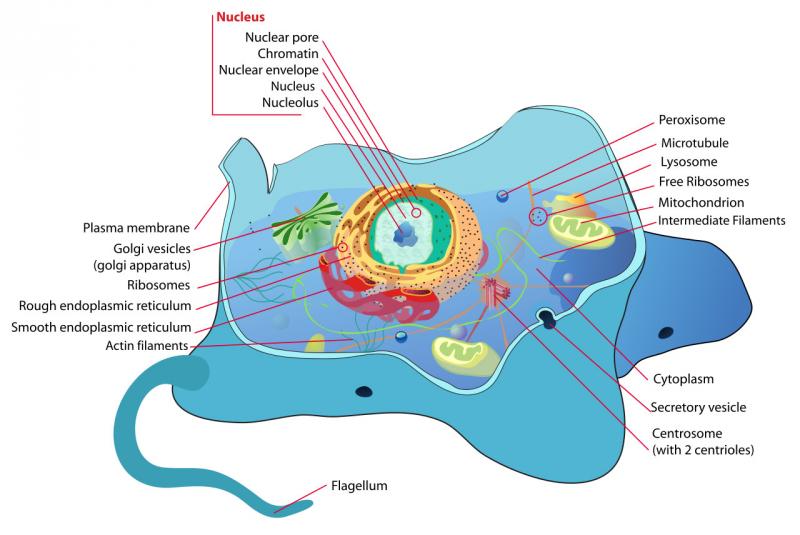- Series:Animals, Transcript English
Genesis 1:24
“And God said, Let the earth bring forth the living creature after his kind, cattle, and creeping thing, and beast of the earth after his kind: and it was so.”
 According to the Encyclopaedia Britannica, animals evolved from unicellular eukaryotes. Eukaryotes are cells that contain a clearly defined nucleus. This membrane enables the two stages (coding and decoding) of protein synthesis to be separated. According to the encyclopaedia, this has enabled different types of cell to evolve to do different jobs. However, no mechanism seems to be available whereby the extra information needed for this variety of cells would be created. Plants and fungi are also presumed to have evolved from such eukaryotes, but they both have semi-rigid cell walls. Animal cells do not, and it is this property that evolutionists suppose has led to the wide variety of movements and other abilities peculiar to animals.
According to the Encyclopaedia Britannica, animals evolved from unicellular eukaryotes. Eukaryotes are cells that contain a clearly defined nucleus. This membrane enables the two stages (coding and decoding) of protein synthesis to be separated. According to the encyclopaedia, this has enabled different types of cell to evolve to do different jobs. However, no mechanism seems to be available whereby the extra information needed for this variety of cells would be created. Plants and fungi are also presumed to have evolved from such eukaryotes, but they both have semi-rigid cell walls. Animal cells do not, and it is this property that evolutionists suppose has led to the wide variety of movements and other abilities peculiar to animals.
At every stage in a supposed evolutionary process there needs to be a spontaneous production of new genetic information. Yet, the only mechanisms seen are the coding and decoding of existing information. Information is copied from DNA to RNA, then transferred in order to construct proteins.
This is why the biblical account of where animals came from is so much more scientific. The Bible refers to animals reproducing after their kind. The biblical kinds of animals comprise those pools of genetic information, outside of which animals do not breed. So all the information needed for every variety of cell and organism was found in the DNA of those kinds as originally created. Information, genetic or otherwise, is not produced by random accidents – it is planned and designed.
We marvel at the splendor and beauty of Your designs, Lord. And we marvel that You love us so much as to send Your Son to die for us. Amen.
Author: Paul F. Taylor
Ref: Encyclopaedia Britannica, , accessed October 26, 2017. Image: Mariana Ruiz, released to Public Domain.
